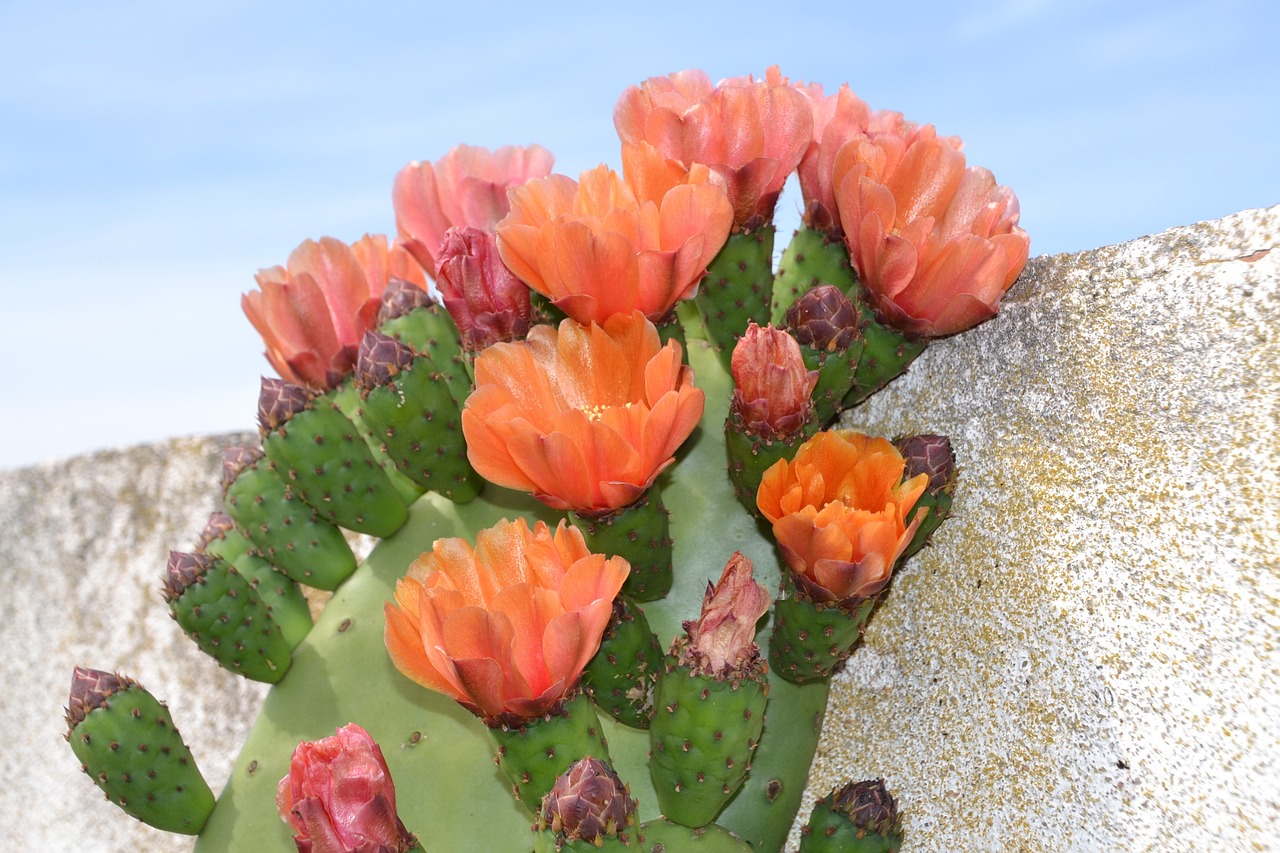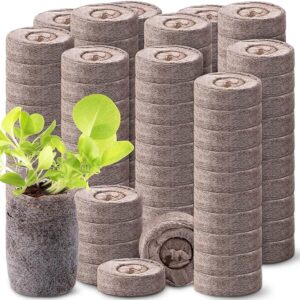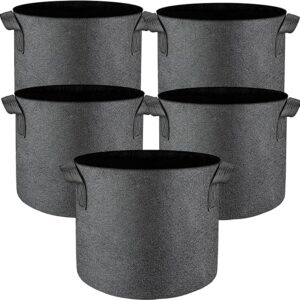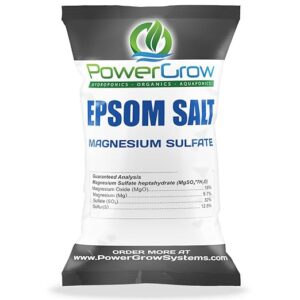Cacti, with their myriad forms and adaptations, create a botanical mosaic that spans deserts, gardens, and homes. This article explores the diverse growth types of cacti, the valuable products harvested from both cultivated and wild specimens, the exquisite flowers they bear, and the unique habitats they thrive in.
1. Growth Types of Cacti:
a. Columnar Cacti:
- Description: Tall and cylindrical, these cacti, like the towering Saguaro, dominate arid landscapes.
- Habitat: Native to the Sonoran Desert and other arid regions.
- Cultivation: Require well-draining soil, full sun, and minimal water.
b. Clustering Cacti:
- Description: Grow in clusters of smaller stems, creating visually striking arrangements.
- Habitat: Found in various desert regions.
- Cultivation: Well-draining soil, bright light, and occasional watering.
c. Epiphytic Cacti:
- Description: Cling to other plants for support, often showcasing flat, segmented stems.
- Habitat: Native to tropical rainforests or subtropical climates.
- Cultivation: Use orchid or epiphytic cactus mix, bright but indirect light, and consistent moisture.
d. Trailing Cacti:
- Description: Cascading stems make them suitable for hanging baskets or ground cover.
- Habitat: Thrive in rocky or elevated areas.
- Cultivation: Well-draining soil, filtered sunlight, and minimal water.
2. Harvested Products from Cacti:
a. Edible Fruits:
Several cacti species produce edible fruits that have been harvested for centuries by indigenous communities and are now gaining popularity in various culinary applications. Here are a few notable examples:
- Prickly Pear (Opuntia spp.):
- Description: Prickly pears, also known as tunas, are perhaps the most widely recognized and consumed cactus fruit. They come in various colors, including red, yellow, and purple, and have a sweet, mildly tangy flavor.
- Uses: Prickly pears can be eaten fresh, juiced, or used in jams, jellies, sorbets, and cocktails.
- Dragon Fruit (Hylocereus undatus):
- Description: Also known as pitaya or pitahaya, dragon fruit is a visually striking fruit with bright pink or yellow skin and white or red flesh speckled with tiny black seeds. It has a mild, slightly sweet taste.
- Uses: Dragon fruit is often enjoyed fresh, added to fruit salads, or used in smoothies and desserts.
- Cholla Buds (Cylindropuntia spp.):
- Description: The buds of certain cholla cacti are edible, with a flavor reminiscent of asparagus when cooked. These buds are often harvested when they are still tender and before the spines develop.
- Uses: Cholla buds can be prepared by boiling or roasting and are used in salads, soups, and various dishes.
- Saguaro Fruit (Carnegiea gigantea):
- Description: The fruit of the Saguaro cactus is harvested when it turns bright red and is ripe. The flesh is sweet, with a taste similar to watermelon.
- Uses: Saguaro fruit is often eaten fresh or used in traditional dishes like jams, syrups, and beverages.
- Barrel Cactus Fruit (Ferocactus spp.):
- Description: Barrel cacti produce small, spherical fruits with a slightly sweet taste. These fruits often have a dry or mealy texture.
- Uses: The fruits can be eaten fresh or used in traditional dishes after processing to remove seeds and spines.
- Pitahaya Agria (Stenocereus gummosus):
- Description: Also known as sour pitaya or pitahaya agria, this cactus produces elongated, reddish fruits with a tangy and sour taste.
- Uses: The sour pitaya is often used in beverages, jams, and sauces, adding a unique flavor to dishes.
- Peruvian Apple Cactus (Cereus repandus):
- Description: The fruit, known as pitahaya or Peruvian apple, is large and oblong with a mildly sweet flavor and a texture similar to melon.
- Uses: Peruvian apple cactus fruit can be eaten fresh, added to fruit salads, or used in smoothies.
It’s important to note that while these cactus fruits are enjoyed in various culinary traditions, proper identification and preparation are crucial, as some cacti may have spines, thorns, or other parts that are not safe for consumption. Additionally, sustainable harvesting practices should be observed to protect cactus populations and ecosystems.
b. Natural Dyes:
- Cochineal Scale Insect (Dactylopius coccus): The crushed insects produce a red dye used in textiles and cosmetics.
- The Cochineal Scale Insect (Dactylopius coccus) is a tiny insect that belongs to the scale insect family. These insects are known for their unique ability to produce a red dye called carmine or cochineal dye. The dye has been historically used for various purposes, including textiles, cosmetics, and even as a food coloring.
- Harvesting Cochineal Dye:
- Cultivation on Cacti:
- Cochineal insects primarily infest various species of cacti, particularly those belonging to the Opuntia genus, commonly known as prickly pears or nopales.
- The female cochineal insect attaches itself to the cactus pad and feeds on its sap.
- Harvesting and Processing:
- The cochineal insects are carefully harvested from the cactus pads, typically by hand.
- Once collected, the insects are often killed by exposure to heat or sunlight.
- The dried insects are then crushed to extract the carmine pigment.
- Extraction of Carmine Dye:
- Crushing the Insects:
- The harvested cochineal insects are thoroughly dried.
- They are then ground into a fine powder using traditional methods or modern machinery.
- Water Extraction:
- The powdered cochineal is soaked or boiled in water or a water-alcohol mixture.
- The color is extracted from the crushed insects into the liquid.
- Straining and Drying:
- The liquid is strained to remove solid particles, leaving behind a concentrated cochineal dye solution.
- The extracted solution can be further concentrated through evaporation.
- The resulting concentrated dye can be dried into a powder or used as a liquid.
- Applications of Cochineal Dye:
- Textiles:
- Cochineal dye has been historically used to dye textiles, producing a range of red and pink hues.
- It is valued for its colorfastness and ability to create vibrant shades.
- Cosmetics:
- Carmine, derived from cochineal, is commonly used in cosmetics, including lipsticks, blushes, and eyeshadows, to achieve red and pink colors.
- Food Coloring:
- Cochineal extract is used as a natural red food coloring in various products, including beverages, desserts, and processed foods.
- It’s worth noting that while cochineal has been widely used, there has been increased awareness and demand for alternative colorants due to concerns related to allergies and vegan preferences. As a result, some industries have explored and adopted other natural or synthetic alternatives for red coloring.
c. Timber:
- Saguaro (Carnegiea gigantea): The woody ribs of the Saguaro have been traditionally used by indigenous peoples for construction.
3. Exquisite Flowers of Cacti:
a. Night-Blooming Cacti:
- Queen of the Night (Peniocereus greggii): Fragrant, white flowers bloom at night, emitting a captivating scent.
b. Vibrant Barrel Cactus Flowers:
- Ferocactus spp.: Showy, funnel-shaped flowers in various colors, adding a burst of vibrancy to the landscape.
c. Orchid-Like Epiphytic Blooms:
- Epiphyllum spp.: Large, showy flowers resembling orchids, often in shades of white, pink, or red.
d. Easter Cactus Color Palette:
- Hatiora gaertneri: Delicate, tubular flowers in hues of red, pink, or white, creating a festive display.
4. Natural and Cultivated Habitats of Cacti:
a. Desert Environments:
Saguaro (Carnegiea gigantea): Flourishing in arid landscapes, the Saguaro has evolved remarkable adaptations to conserve water, including its iconic water-storing trunk and arms. Other desert-dwelling companions include:
Barrel Cacti (Various Ferocactus species): With their cylindrical forms, these cacti thrive in arid environments such as deserts, exhibiting resilience to high temperatures.
b. Tropical Rainforests:
Epiphytic Cacti (Various Epiphyllum species): In tropical rainforests, epiphytic cacti demonstrate their unique adaptation by clinging to trees, absorbing moisture from the air. Notable species include:
Epiphyllum oxypetalum (Queen of the Night): Known for its night-blooming, fragrant flowers, this epiphytic cactus thrives in the humid atmospheres of tropical rainforests.
c. Cultivated Gardens and Homes:
Various Cacti Species: Adaptable to potted environments, cacti have become favored choices for indoor and outdoor cultivation. Popular species for cultivation include:
Opuntia ficus-indica (Prickly Pear): Well-suited for gardens and pots, the Prickly Pear offers edible fruits and distinctive pad structures.
Echinocactus grusonii (Golden Barrel Cactus): With its compact, globular form, this cactus is a favorite for both indoor and outdoor settings.
In cultivating these diverse cacti species, enthusiasts can recreate the beauty of different natural habitats, bringing a touch of the desert or rainforest into their homes and gardens.
Conclusion: The world of cacti unfolds as a rich tapestry, weaving together varied growth forms, valuable products, and breathtaking flowers. From the towering Saguaro in the deserts to the delicate blooms of epiphytic cacti in tropical rainforests, each species contributes to the unique charm of its habitat. As enthusiasts cultivate these fascinating succulents, they become stewards of a botanical legacy, embracing the resilience and beauty that define the captivating world of cacti.
-
100 Pcs 6 x10cm Plastic Nursery/Garden Label Tags
-
100 Pcs Peat Pellets Plant Starter, 36MM
-
3 Pack 6.5 Inch Pruning Shears, Gardening Scissors
-
5 Pcs Grow Bags 5 Gallon Plant Grow Bags Multi-Purpose Nonwoven Fabric Pots with Durable Handles
-
Epsom Salt (Magnesium Sulfate) Agricultural Grade (5 Pounds)
-
Gardening Log Book and Planner
-
Jack’s Classic All purpose Fertilizer, water soluble, 20-20-20 1.5 lbs
-
Mini Greenhouse-4-Tier Indoor/Outdoor. Grow Plants, Seedlings, Herbs, or Mushrooms
-
Mini Humidity Meter Hygrometer/Thermometer 6 Pack










